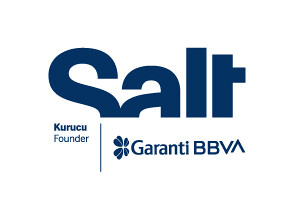In the Realm of Three Inland Seas
November 7, 2023–April 14, 2024
İstiklal Caddesi 136, Beyoğlu
34430 Istanbul
Turkey
In the Realm of Three Inland Seas is the most comprehensive exhibition of Handan Börüteçene, whose practice has firmly focused on archeology, history, and nature for over forty years. The title points to a geography that has inspired the artist with its land and seas as well as cultural heritage and myths: Anatolia and Thrace. The selection presented at Salt Beyoğlu highlights various works, from Börüteçene’s early pieces to her award-winning installation Kır/Gör [Break/See] (1985) and her large-scale public sculptures. Tracing an artistic practice that challenges amnesia, the exhibition opens up the artist’s desires, issues that she has persistently tackled, recurring motifs, and new directions in her works.
Börüteçene’s work has been inspired by the expansive history and multilayered visuality of Istanbul, the city she was born and raised in. While studying ceramics at the State Academy of Fine Arts in Istanbul, she joined archeological fieldwork with the motivation of moving beyond the “four walls” and learning from the earth’s past. Her first excavation at Arykanda Ancient City coincided with her senior year at the Academy. Upon graduating in 1981, the artist moved to Paris and worked in the sculpture studio of Georges Jeanclos and César (Baldaccini) at l’École nationale supérieure des Beaux-Arts (1982-1984). Her first solo exhibition opened in Paris, while she took part in other significant exhibitions in Istanbul.
Börüteçene participated in the 5th exhibition of New Trends in Art (1985), organized as part of the Academy’s Istanbul Art Festival, with her installation Kır/Gör [Break/See]. She built a mudbrick structure based on Neolithic houses in Western Anatolia’s oldest site Hacılar, decorated the interior with contemporary relics ranging from technological devices to newspapers, banknotes, and various everyday objects, and invited the viewers to smash cuneiform tablets. Having received notable recognition in Turkey’s contemporary art scene, this work examined the ruined urban landscape in line with the cultural experiences of the 1980s and introduced two major veins in Börüteçene’s artistic practice and their intertwinement: the dialogue between cultures, ages, species, and humans and the ‘’memory of the Earth’’ that holds the knowledge from this dialogue. In the series Yeryüzünün Belleği [Memory of the Earth] (1995), she explored the idea of cultural continuity through the Anatolian flora that has existed since the Hittite era: she created “coffers of memory” that mix the plants and seeds from around the Kızılırmak river, collected in light of the Hattusa tablets, with soil from Troya and Aiolis regions.
For Börüteçene, the concept of “memory of the Earth” covers the artist’s personal history as well. As her universe of knowledge expanded, her acquaintances from previous eras—such as Sumerian Ludingirra, Hittite Teshub, Sappho of Lesbos, and Moero of Byzantium—grew larger. She recorded her dialogues with such companions in her journals, which she has been carrying from her Paris studio to Venetian cafés and Mediterranean coasts. A selection of these notes, including quotes, drawings, scribbles, and poems, has turned into logbooks for works such as Kendime Gömülü Kaldım [I Remained Buried Within Myself] (1999-ongoing). Previously printed only in a few catalogs, these texts shed light on Börüteçene’s artistic thought process as they now accompany the works in the exhibition.
The artist has pursued a nomadic life between Istanbul, Paris, and Kaş. These translocations, in time, distanced Börüteçene from her works physically, if not conceptually. A group of works that were acquired into collections or that she gifted to friends have disappeared, deteriorated, or faded away due to various reasons. Her public sculptures in Istanbul have moved away from their original purpose due to functional changes in those places or are left to wear. Emphasizing these unrecorded, out-of-sight, and lost works, In the Realm of Three Inland Seas also addresses the negligence towards cultural heritage and artworks in Turkey.
In the Realm of Three Inland Seas is programmed by Amira Akbıyıkoğlu from Salt. Further information on the accompanying public programs will be announced at saltonline.org and Salt’s social media channels.
Founded in 2011 by Garanti BBVA, Salt is a not-for-profit cultural institution in public service engaging in research, exhibitions, publications, web projects, and public programs. The institution works at the intersections of visual practices, the built environment, social life, and economic history. With its library and archive, Salt Research provides public access to the institution’s print and digital resources while contributing to the development of local and regional memory through its expanding collections.



